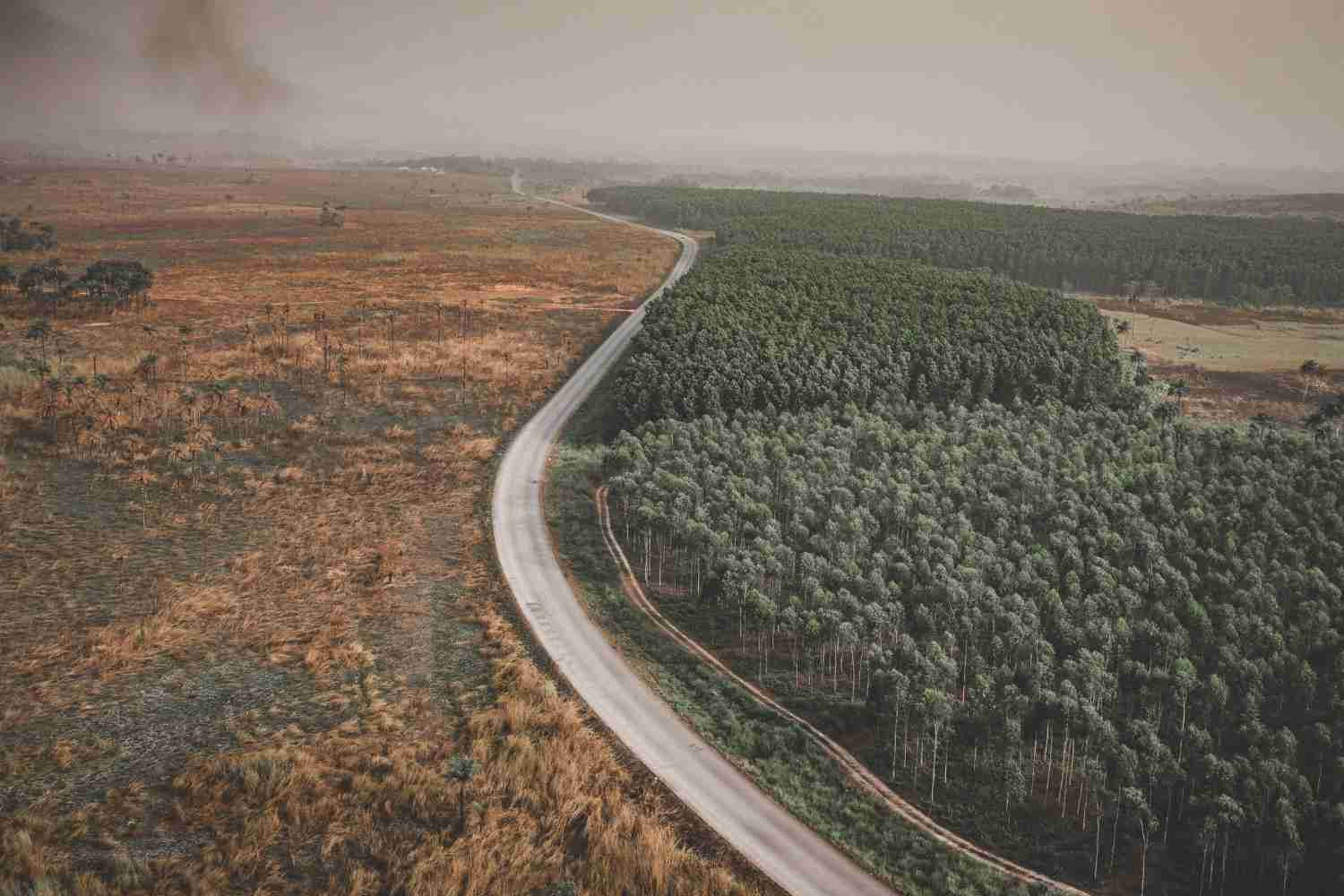The killer isn't a virus or disease—it's the scorching heat that erupts where forests once stood. A groundbreaking study published in Nature Climate Change reveals the scope of a health emergency that has been largely ignored, showing how the void left by vanished trees is filling up with human casualties.

Table of contents
Deforestation carries a direct human cost, measurable in lives lost: nearly 28,000 annually. This is the number of people who die not from axes or fire, but from the lethal fever unleashed when forests disappear. This silent massacre has been revealed by new research that, for the first time, definitively links forest clearing to a spike in heat-related deaths.
How trees shield us from deadly heat
Every forest acts like a biological air conditioner. Its canopy screens out the sun’s rays while, through transpiration, it releases water vapor into the air that cools the surrounding environment. Cutting down this natural shield means condemning local populations to an immediate and deadly temperature spike that compounds the global warming already underway.
The impact of this artificial heat wave is vast. Researchers estimate that between 2001 and 2020, a staggering 345 million people were directly exposed to this phenomenon. For 2.6 million of them, the temperature increase exceeded 5.4°F (3°C). In a world already struggling to contain global warming, this represents an acceleration toward unsustainable conditions.
The warming effect is immediate and dramatic. Analysis shows that deforestation caused average land surface warming of 1.26°F (0.7°C), and in some regions, this local heating accounts for more than two-thirds of all warming experienced. It’s not gradual climate change we’re talking about here—it’s an instant thermal shock that can make the difference between life and death.
The hardest hit regions
This catastrophe has its epicenters. Southeast Asia bears the heaviest burden, accounting for more than half of all deaths due to its high population density in deforested areas. The study finds that deforestation alone drove, on average, 0.81°F (0.45°C) of warming in the tropics over 2001-20, accounting for 64% of the total warming in regions with tropical forest loss. Tropical Africa and the Americas follow, where heat linked to deforestation represents over one-third of all heat-related mortality, proving it to be one of the principal killers.
Six out of every 100,000 people living in deforested areas died as a result of deforestation-induced warming during this time, the researchers warn. In Southeast Asia, this figure climbs to an alarming 8-11 deaths per 100,000 people in areas of forest loss.
Professor Dominick Spracklen of the University of Leeds, co-author of the study, summed up the discovery bluntly to the Guardian: “Deforestation kills.” His words underscore an uncomfortable truth: these forests aren’t idle landscapes sitting pretty in the background. They’re working overtime, doing something critically important for us. They regulate temperature, bring rainfall, and support the agriculture that people depend on for survival.
The agricultural connection
The primary cause of this fever, as the study indicates, is agricultural expansion. The global appetite for commodities like soy, palm oil, and meat has a direct connection to this environmental, climate, and health crisis. Every time we clear forests to make room for crops or cattle, we’re essentially installing natural furnaces that pump out deadly heat.
The irony is stark: we’re destroying the very ecosystems that keep us cool in order to grow food, but in the process, we’re making vast swaths of the planet literally uninhabitable. The researchers note that “in regions of forest loss, local warming from deforestation could account for over one third of total climate heat-related mortality”—a proportion that highlights just how significant this overlooked factor has become.
What makes this even more concerning is that the effects compound. Climate model simulations indicate that cropland expansion into tropical forests could elevate local near-surface air temperature and increase heat stress in low-latitude regions. We’re not just dealing with today’s clearing—we’re setting up a cascade of warming that will make future heat waves even more deadly.
The study reveals a troubling reality: while the world focuses on carbon emissions from fossil fuels, we’ve been missing a more immediate threat. The biophysical warming from deforestation—the immediate loss of natural cooling—dwarfs the climate effects of the carbon released when trees are cut down. It’s like removing air conditioners from buildings while simultaneously cranking up the heat.
This research reframes tropical deforestation as more than just a carbon storage and biodiversity issue. As Dr Nicholas Wolff from the Nature Conservancy notes, the paper “reframes tropical deforestation as not only a carbon emissions and ecological issue, but also a critical public health concern”. The hidden health crisis has been hiding in plain sight, masked by our focus on long-term climate change while people suffer and die from immediate, localized warming right now.
The implications extend far beyond the numbers. Vulnerable populations, particularly traditional and Indigenous communities, often live near deforested areas and face limited access to resources and infrastructure needed to cope with the combination of rising temperatures and environmental changes caused by deforestation and climate change. These are communities that contributed least to the problem but are paying the highest price—with their lives.
